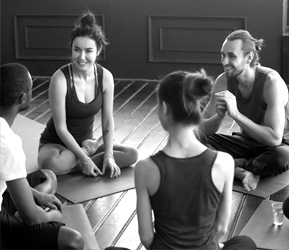רחל ניסנהולץ-גנות1, רותם מאור2, לני עופרי1, יעל סלע3, אבי זיגדון1, יוסי הראל פיש4, ריקי טסלר1
1אוניברסיטת אריאל
2המכללה האקדמית לחינוך ע"ש דוד ילין
3המרכז האקדמי רופין
4אוניברסיטת בר אילן
תקציר
בעולם ובישראל הוראת החינוך הגופני (חנ"ג) נכללת בתוכנית הליבה של בתי הספר ומבוססת על תפיסה גופנית-בריאותית ועל הקניית הרגלי אורח חיים פעיל ובריא בקרב קהילת בית הספר. מחקרים מראים, כי השתתפות בני נוער בשיעורי החנ"ג יכולה להוביל לירידה בדפוסי התנהגויות סיכון ולעלייה במעורבות בפעילות גופנית גם מחוץ לכותלי בית-הספר. המחקר הנוכחי בחן באיזו מידה משתני החנ"ג בבית הספר (אהבה לשיעורי החינוך הגופני, משך הפעילות בשיעורי החינוך הגופני והשתתפות במגמת ספורט) משמשים גורמי מגן מפני התנהגויות סיכון (שכרות, שתיית אלכוהול מופרזת ועישון קנאביס) בקרב בני הנוער. מחקר זה הוא מחקר חתך (Cross Sectional) כמותני מתאמי ,המבוסס על ניתוח משני של נתוני ה- HBSC (Health Behavior In School Age Children) בישראל לשנת 2019-2018. אוכלוסיית המחקר כללה 4,407 תלמידים מכיתות ו', ח', י'-י"ב, מהמגזר הממלכתי (54%), הממלכתי-דתי (14%) והערבי (32%) אשר ענו על שאלות ההרחבה בנושא החינוך הגופני והתנהגויות הסיכון. מהמחקר עולה כי אהבה לשיעורי החנ"ג ומשך הפעילות בשיעורים אלה מהווים גורמי מגן מפני התנהגויות הסיכון שנבדקו. בנוסף, השתתפות במגמת ספורט מהווה גורם מגן למניעת שכרות ושתייה מופרזת בקרב בני הנוער. נמצא קשר שלילי בין דיווח על אהבה לשיעורי החנ"ג ומשך הפעילות בשיעורים אלה לבין התנהגויות סיכון. המחקר מתמקד בחשיבות שיש למקצוע החנ"ג בבתי הספר לצמצום התנהגויות סיכון בקרב בני הנוער. מומלץ לקובעי המדיניות לפתח תוכניות התערבות במסגרת שיעורי החנ"ג כדי לסייע בהתמודדות עם התנהגויות סיכון של בני נוער ליצירת דור עתיד בריא יותר.
תארנים: חינוך גופני, התנהגויות סיכון, מגדר, גיל, בית הספר
לקריאת המאמר המלא
Physical education as a protective factor for risk behaviors among adolescents in Israel: age and gender differences
R. Nissenholz-Ganot, R. Maor, L. Ofri, Y. Sela, A. Zigdon, Y. Harel-Fisch, R. Tesler
In Israel, as well as in other countries throughout the world, physical education (PE) classes are included in a school’s core program. PE classes are based on physical health concepts and focus on instilling active and healthy lifestyle habits among students. Studies have shown that adolescents' participation in PE classes can lead to a decrease in risk behavior patterns and an increase in involvement in physical activity even outside the school walls. The present study examined the extent to which PE variables in school (love of PE classes, duration of PE classes, and participation in sports) serve as protective factors against risky behaviors (drunkenness, excessive alcohol consumption, and cannabis smoking] among adolescents. Quantitative correlations were based on a secondary analysis of the Health Behavior in School-Age Children Study data from Israel during the years 2018-2019. The study population included 4,407 students from the sixth, eighth, tenth, and twelfth grades, from the following sectors: state (54%), state-religious (14%), and Arab (32%). Students answered questions about PE and risk behaviors. We found that love for PE and duration of activity in PE were protective factors against the risk behaviors examined. Participation in sports was found to be a protective factor in preventing drunkenness and excessive drinking among teenagers. Policy makers should develop intervention programs as part of the PE lessons to help address the risk behaviors of adolescents, in order to create a healthier future generation.
Descriptors: Physical education, risk behaviors, gender, age, school

.png)





 יום פתוח - יום שני 30.5.2022 בשעה 16:30 - תואר ראשון, שני, הסבת אקדמאים ומכינה
יום פתוח - יום שני 30.5.2022 בשעה 16:30 - תואר ראשון, שני, הסבת אקדמאים ומכינה
